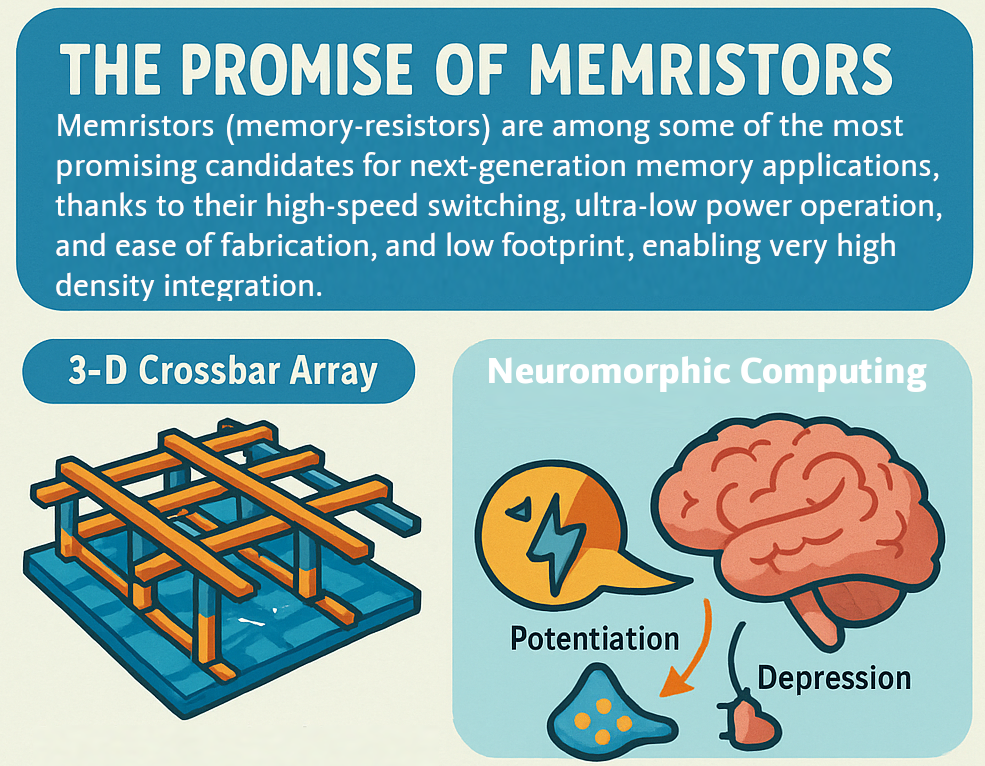Memristors (short for memory resistors) are emerging as one of the most promising technologies for next-generation memory and computing systems. These two-terminal devices offer high-speed switching, ultra-low power consumption, non-volatile data retention, and simple fabrication, making them ideal for high-density integration, including in 3D crossbar architectures.

Key Advances in Memristor Technology
Recent advancements have significantly improved memristor performance:
- Endurance: Demonstrated to exceed 120 billion switching cycles.
- Retention: Data can be stored reliably for over 15 years.
- Scalability: Functional devices have been fabricated at dimensions as small as ~2 nm, supporting ultra-dense crossbar arrays.
Memristors and Brain-Like Computation
What truly sets memristors apart is their ability to emulate biological synapses, the fundamental building blocks of learning and memory in the human brain. Memristors naturally exhibit synaptic plasticity, including:
- Potentiation and Depression – Strengthening or weakening of signals over time.
- Habituation and Adaptation – Mimicking neural desensitization.
- Spike-Timing Dependent Plasticity (STDP) – Adjusting the synaptic weight based on the precise timing between pre- and post-synaptic spikes.
STDP modifies the strength of the connection between two artificial neurons depending on the relative timing of their signals—mirroring how learning occurs in biological systems.
Applications in Neuromorphic Systems
By combining fast switching, low power, synaptic behavior, and extreme scalability, memristors are ideally suited for neuromorphic computing—hardware systems designed to mimic the brain.
Memristor-based circuits have already demonstrated abilities such as:
- Pattern Recognition
- Logical Inference
- Motor Control for Robotics
Vision for the Future
Memristors hold the potential to revolutionize AI hardware by enabling low-power, highly intelligent systems. Applications on the horizon include:
- Cognitive smartphones with enhanced language understanding.
- Autonomous vehicles with real-time learning capabilities.
- Smart medical devices with adaptive, context-aware functionality.
In short, memristors are paving the way toward brain-inspired computing that merges energy efficiency with intelligence.
